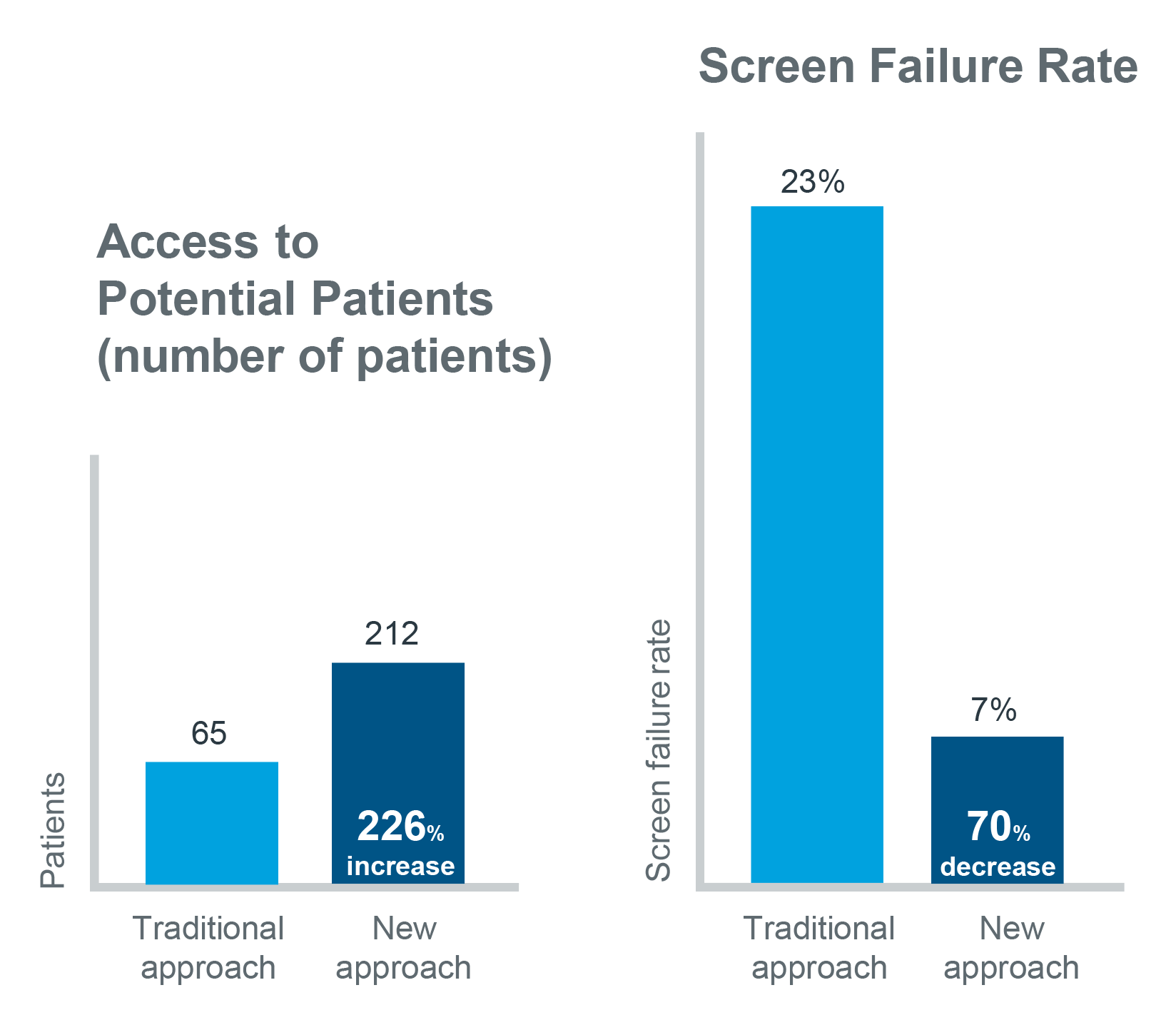















- Locations
- United States
- US Blogs
- RWE Efficient Approach for Meeting Safety Reporting Requirements
If drug manufacturers want to sustain and optimize approval and reimbursement support for their products, they need to the meet data expectations of regulators, health technology assessment (HTA) bodies, and payers. Although this can be a time-consuming and costly process, many developers are finding that real world evidence (RWE) studies can deliver dramatic efficiencies while cutting the time and cost of these efforts.
RWE studies can provide deep insights into the use of a specific drug in real world settings, giving sponsors a cost-effective way to prove their product is safe and effective for the patients they are serving. These studies can be tailored to the specific needs of the developers and incorporate primary and secondary data to generate evidence sooner and at a lower cost than more traditional study approaches.
Data and analytics drive better results
RWE studies also provide a more cost-effective way to create health economics and outcomes research (HEOR) reports for HTA bodies to increase the likelihood of reimbursement and to support a stronger launch strategy.
Using existing data and analytics technology can enable more efficient execution of these studies, in part by using secondary data sources to fill gaps and deliver more robust results. For example, a developer may begin by gathering data from an existing registry, then reverse engineer the results to capture new insights from specific physicians or patients to meet safety reporting requirements.
In other RWE for safety studies, developers will track the impact of adverse events on quality of life by linking patient reported outcomes (PROs) to electronic medical records (EMR); or they will combine EMR and claims data to capture healthcare resources utilization for various health profiles to provide regulators with a more robust picture of a treatment’s safety profile.
Safety studies for rare diseases
Safety studies that incorporate RWE are becoming increasingly common as the pharmaceutical industry focuses on developing precision therapies for rare diseases and oncology, which are often approved with limited safety data. In 2019, 50 new drugs were approved by the U.S. Food and Drug Administration (FDA). Of these, nearly two-thirds (74%) were approved via an accelerated pathway, meaning their development programs had fewer patients and monitored them for less time, resulting in less data. The studies on accelerated pathways had a median of just over 300 subjects.1
This trend is driving demands for more robust real world post-marketing studies to provide safety evidence to regulators, payers, and physicians. In some cases, such as cell and gene therapies, regulators require 5-15 years of follow-up, which presents some challenges. In these cases, the patients being studied often will have had only a single treatment, or multiple treatments over a limited duration, which can make it difficult to keep them engaged with a study as time passes.
To manage these risks and ensure the best possible data is captured, biotech companies can use RWE studies to support the follow-up process.
Real time data for rapid results
Sponsors can also incorporate real-time digital data in these studies to accelerate results. The IQVIA CORE™ provides developers with access to a vast global healthcare data environment and to identify targeted patient populations, making it possible for them to rapidly capture and contextualize adverse events through direct-to-patient studies, and to identify the most effective predictive safety management strategies.
For example, IQVIA recently conducted an RWE safety study on a treatment for Leber’s Disease, an ultra-rare form of blindness. The population for the treatment was small and widely dispersed, but by accessing IQVIA’s global healthcare data sets and advanced analytics tools, we were able to identify a subset of research institutions that serve as focal point for these patients, and a number of specialists who could refer patients into the study.
That resulted in a 226% increase in the anticipated study participant population. We then used secondary data to engage with treating physicians to drive faster enrollment and more reliable referrals, reducing the screen failure rate by 70%.

It is one of many examples that demonstrate the value of leveraging existing data sets and advanced analytics solutions to gain deep and more efficient insights into the management of a drug safety program.
Regardless of the treatment type, making RWE part of the clinical development lifecycle can help companies cut significant time and cost from their safety monitoring strategies, reduce risks, and more efficiently meet the expectations of regulators, payers, and healthcare decision makers. Leveraging technology, analytics, and real world data sets accelerates their real world data collection, and ensures they can provide the most robust data to support their goals.
IQVIA can help you analyze and understand the ever-expanding ecosystem of clinically-rich data in the context of your organization’s needs. By combining advanced analytics with unparalleled data and scientific expertise, IQVIA provides customers with innovative Real World Evidence approaches to meet stakeholder needs throughout the product lifecycle.
To learn more about how to create an effective RWE strategy, including innovative design models, and technologies to accelerate results, contact us, or listen to the IQVIA webinar, Real World Evidence Strategy for Specific Therapy Areas





